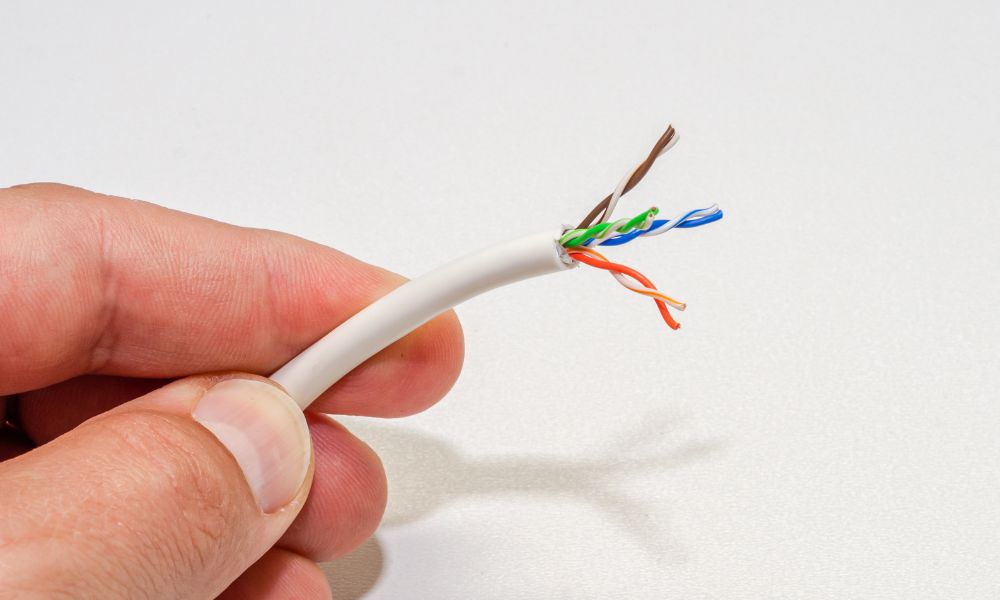
We use cables for various network connections to link devices and transfer data. Telephone and Ethernet cables are twisted pair cables that transfer signals well thanks to their wiring type. Various aspects of this cable are benefits, while others are drawbacks. Knowing how a twisted pair of cables affects your network usage will help you find the best use for it.
What Is a Twisted Pair Cable?
Wires made of copper or another type of conductor within cables have specific formations to allow electricity to run through them. Ethernet cables and other cables used in communications have their wires twisted in a helix shape, allowing one wire to transfer the electrical pulses to ground the pair. The helix shape creates a path for the electricity while mitigating interference like crosstalk.
Types
There are two main types of twisted pair cables: shielded and unshielded. A shielded twisted pair (STP) has an aluminum braid or screen layer that acts as a barrier against crosstalk, further mitigating interference. Depending on the type of shielded twisted pair and which part of the cable has aluminum shielding, crosstalk may decrease between cables or adjacent twisted pairs. The unshielded twisted pair (UTP) is a standard pair cable without shielding. It relies on the twisted pair’s ability to defend against interference, which won’t have as much protection.
Pros
Twisted pair cables have many advantages in networks. Most twisted pair cables are easy to set up and install, making them ideal for small networks with few devices or large networks with various technology.
A good example of an effective twisted pair cable is the HDMI cable. It is effective for digital and analog applications. Many companies have technology that uses HDMI-compatibile devices for this reason, and they will order wholesale HDMI cables to fulfill their network needs. These cables work well for data transmission across short to mid distances and transfer data quickly, thanks to shielding around the twisted pairs.
Cons
While twisted pair cables have plenty of benefits, they also have some cons that negatively affect a network. These cables cause electromagnetic interference that may create an opening for hackers and threats to steal data or observe communications, so it may create issues for twisted pairs.
It’s easy for analog and digital signals to carry over long distances if a repeater device retransmits the signal, which may be inconvenient for budgeted networks. Twisted pair cables are naturally thin, so you will need to spend more on STP cables with more protection from physical damage that may occur in some environments.
Overall, the twisted pair cable has various uses in cable technology. It has upsides and downsides depending on how you use it. Understanding how these features may help or harm the progress of your network will give you all the information you need to make the best choices for your data and telephone communication.



